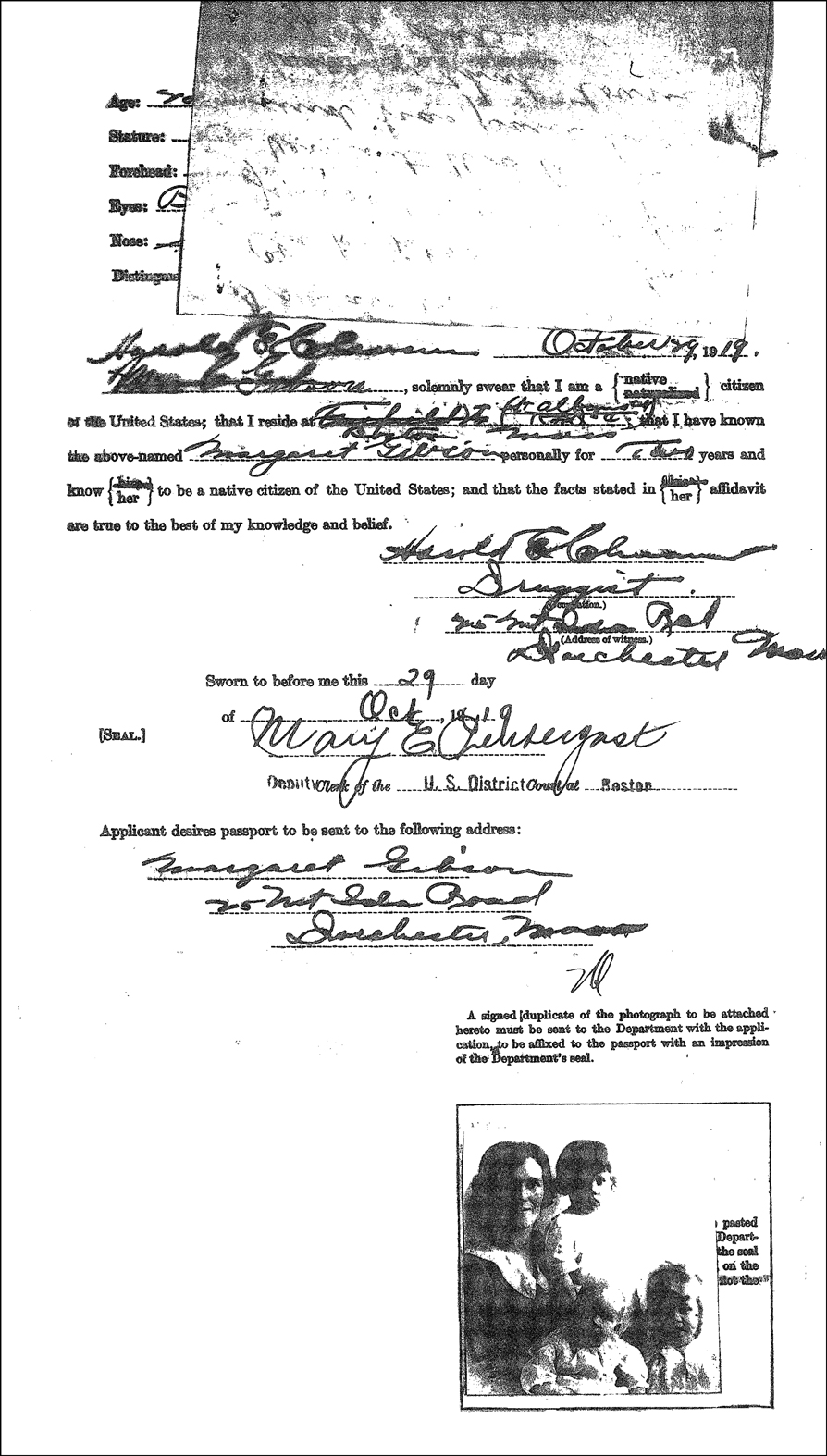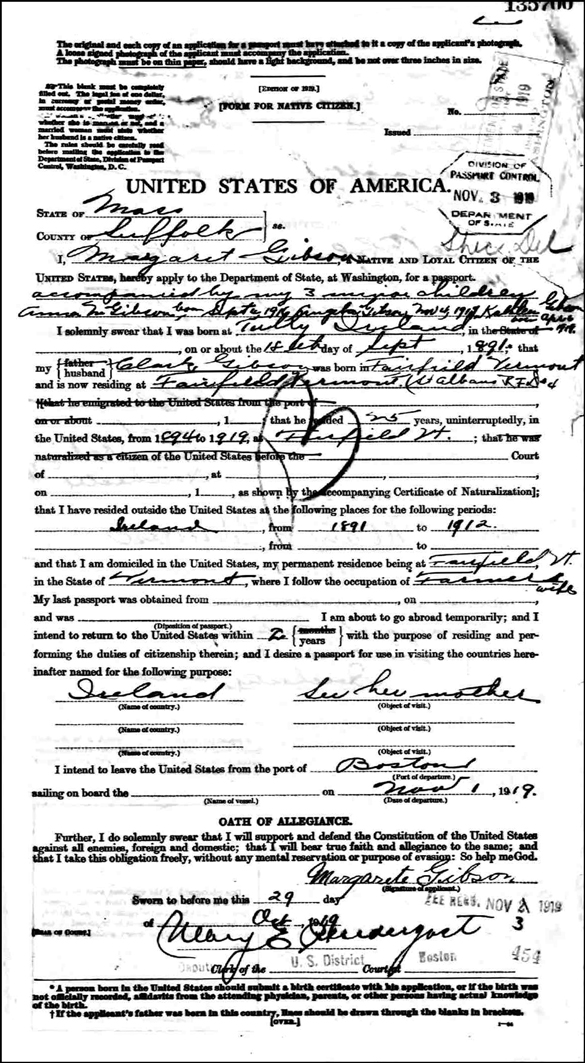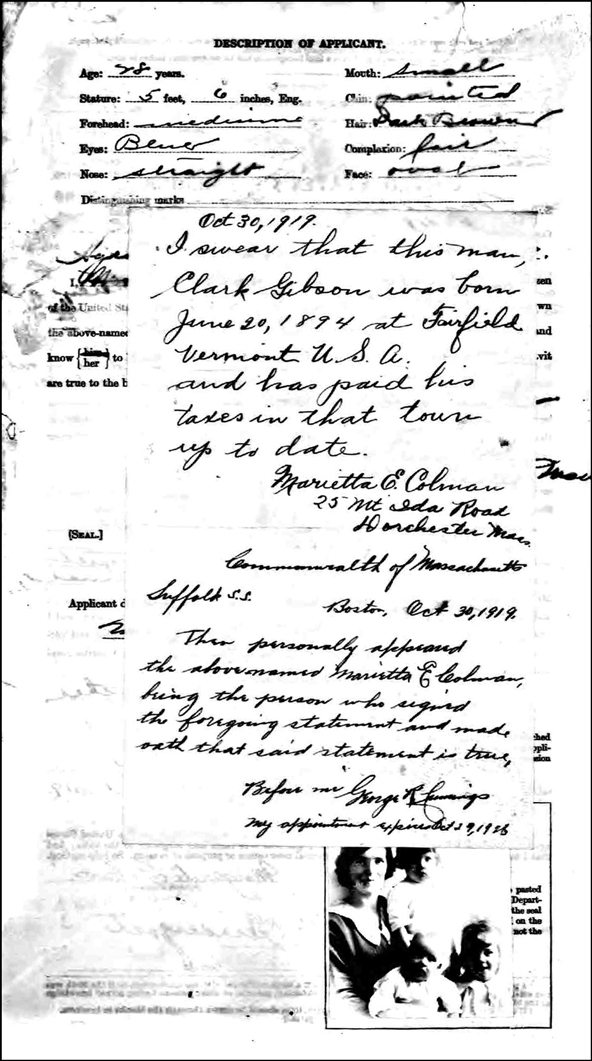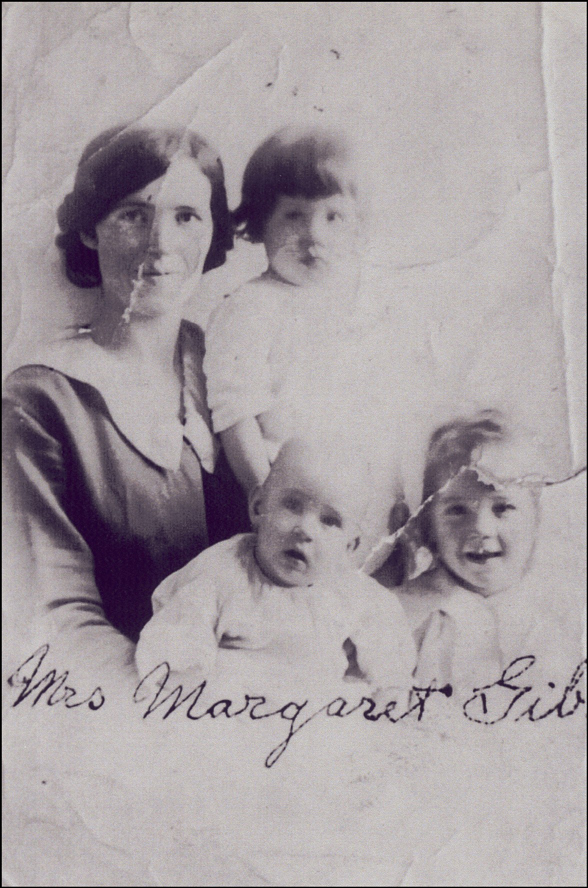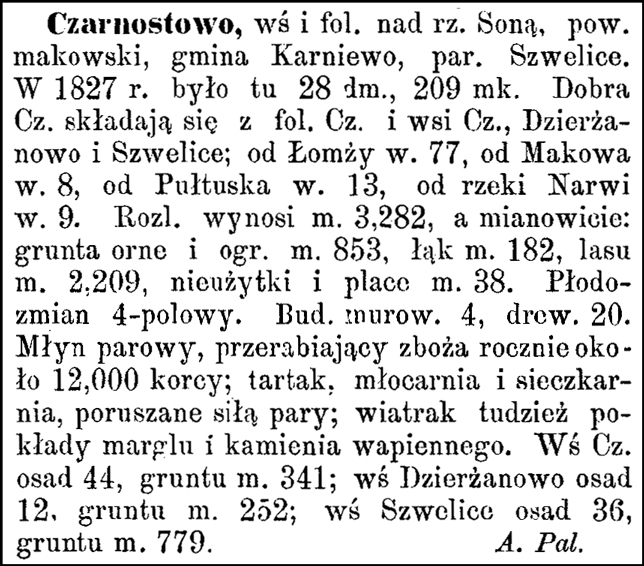The Polish village of Dębiny lies close to the village of Pomaski where my grandfather lived. I’m continuing to translate the Słownik Geograficzny Królestwa Polskiego entries for neighboring villages in order to get a better understanding of what the area where my grandfather grew up was like.
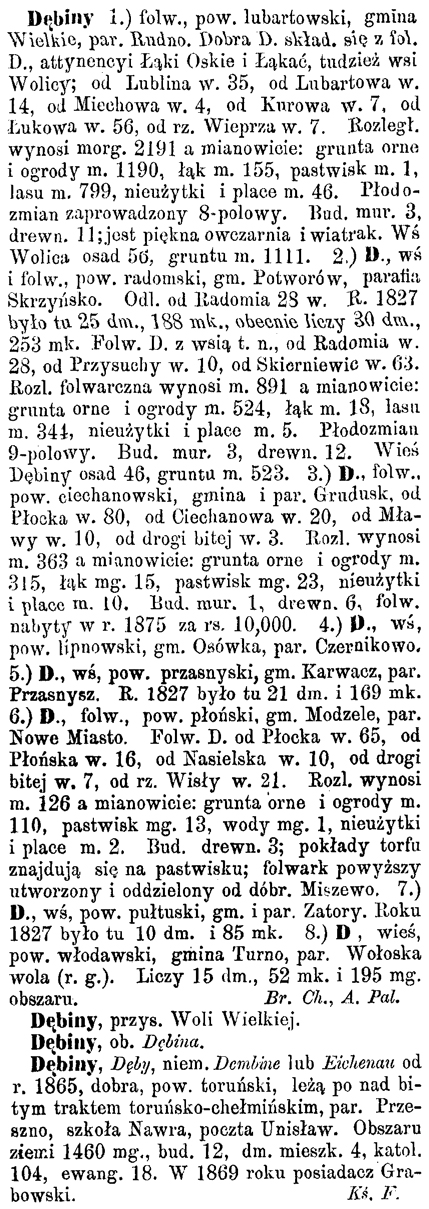
Słownik Geograficzny Entry for Dębiny
SOURCE: Sulimierski, Filip, Bronisław Chlebowski, and Władysław Walewski, eds., Słownik Geograficzny Królestwa Polskiego i Innych Krajów Słowiańskich (Geographical Dictionary of the Kingdom of Poland and other Slavonic Countries) – Warsaw 1881, Volume II, pages 17-18.
Click on the link for a PDF copy of the Słownik Geograficzny Entry for Dębiny. Translated from the Polish, the entry states the following:
Dębiny, 1.) grange [large manorial farmstead], Lubartów powiat [district], Wielkie gmina [municipality], Rudno parish. The property of Dębiny consists of the Dębiny grange, [attynencyi?] Łąki Oskie and Łąkać, the village of Wolica is here; 35 versts [0.66 miles per versts] from Lublin, 14 versts from Lubartów, 4 versts from Miechowo, 7 versts from Kurowo, 56 versts from Łukowo, 7 versts from the Wieprza River. The extent amounts to 2191 mórgs [about 1.388 mórgs per acre] and namely: 1190 mórgs of arable land and gardens, 155 mórgs of meadows, 1 mórg of pastures, 700 mórgs of forests, 46 mórgs of wastelands and squares. They introduced 8-field crop rotation. Three brick buildings, 11 wooden buildings; there is a beautiful sheepfold and windmill. The village of the Wolica settlement extends 56 mórgs, 1111 mórgs of land.
2.) Dębiny, a village and grange, Radom powiat, Potworów gmina, Skrzyńsko parish. Twenty-eight versts not far from Radom. In the year 1827 there were 25 homes and 188 residents here, currently totaling 30 homes and 253 residents. The Dębiny grange is in the village of the same name, 28 versts from Radom, 10 versts from Przysuchy, 63 versts from Skiernieric. The extent of the grange amounts to 891 mórgs and namely, 524 mórgs of arable land and gardents, 344 mórgs of meadows, 5 mórgs of meadows, 344 mórgs of forests, 5 mórgs of wastelands and squares. 9-field crop rotation. Three brick buildings, 12 wooden buildings. The village of Dębiny settlement is 46 mórgs with 523 mórgs of land.
3.) Dębiny, a grange in the Ciechanów powiat, Grudusk gmina and parish, 80 versts from Płock, 20 versts from Ciechanów, 10 versts from Mławy, 3 versts from the beaten track. The extent amounts to 363 mórgs and namely: 315 mórgs of arable land and gardens, 15 mórgs of meadows, 23 mórgs of pastures, 10 mórgs of wastelands and squares. One brick building, 6 wooden buildings, the grange was acquired in the year 1875 for 10,000 silver rubles.
4.) Dębiny, a village in the Lipno powiat, Osówka gmina, Czernikowo parish.
5.) Dębiny, a village in the Przasnysz powiat, Karwaca gmina, Przasnysz parish. In the year 1827 there were 21 homes and 169 residents here.
6.) Dębiny, a grange in the Płonsk powiat, Modzele gmina, Nowe Miasto parish. The Dębiny grange is 65 versts from Płock, 16 versts from Płońsk, 10 versts from Nasielsk, 7 versts from the beaten path, 21 versts from the Wisła [Vistula] River. The extent amounts to 126 mórgs, and namely: 110 mórgs of arable land and gardens, 13 mórgs of pastures, 1 mórg of water, 2 mórgs of wastelands and squares. Three brick buildings; a bed of peat is located in the pasture; the preceding grange is formed and separated from the property of Miszewo.
7.) Dębiny, a village in the Pułtusk powiat, Zator gmina and parish. In the year 1827 there were 10 homes and 85 residents here.
8.) Dębiny, a village in the Włodawa powiat, Turno gmina, Wołoskawola parish (r. g.). There are a total of 15 homes, 52 inhabitants and 195 mórgs of territory.
                                                 Bronisław Chlebowski, A. Palmirski
Dębiny, a favor of the Great Will.
Dębiny, see Dębina.
Dębiny, Dęby, in German Dembine or Eichenau from the year 1865, possession, Toruń powiat, it lies above the beaten track from Toruń to Chłemiński, Przeszno parish, school in Nawra, post office in Unisław. The territory of land is 1460 mórgs, 12 buildings, 4 homes of residents, 104 Catholics, 18 Evangelicals. In the year 1869 it was owned by the Grabowskis.
                                                   The Reverend Fankidejski
As you can see, there are quite a number of Polish villages named Dębiny. The one near my grandfather’s village is number 3, the village in the Ciechanów powiat.
Of the villages listed here, most were in the Russian Partition of Poland, except for the last which entry which was in the Prussian Partition. The Gubernias to which these villages belonged is as follows:
-
Lublin Gubernia
-
Radom Gubernia
-
Płock Gubernia
-
Płock Gubernia
-
Płock Gubernia
-
Płock Gubernia
-
Łomża Gubernia
-
Siedlce Gubernia
The village of Dębiny in the Prussian Partition was in West Prussia.
Copyright © 2007 by Stephen J. Danko




